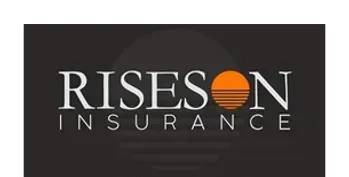
Understanding Comprehensive Coverage in Insurance
September 30, 2024 | Insurance
Understanding Comprehensive Coverage in Insurance: What You Need to Know
When it comes to securing the right insurance for your vehicle, understanding the nuances of different coverage options is crucial. Among these, comprehensive coverage often stands out as a key component of a robust insurance policy. But what exactly is comprehensive coverage, and why might you need it? Let's delve into the details.
Comprehensive coverage, often referred to as "other than collision" coverage, is an optional type of auto insurance that helps protect your vehicle against damages that are not caused by a collision. Unlike collision coverage, which pays for damages from an accident with another vehicle or object, comprehensive coverage addresses a range of non-collision-related incidents.
Comprehensive coverage typically encompasses the following scenarios:
Theft : If your vehicle is stolen, comprehensive coverage helps reimburse you for its loss, minus your deductible. Vandalism : Damage resulting from vandalism or malicious acts is covered. This could include broken windows or graffiti. Natural Disasters : If your vehicle is damaged or destroyed by events like hurricanes, tornadoes, earthquakes, or floods, comprehensive coverage has you covered. Falling Objects: Damage caused by objects falling onto your vehicle, such as tree branches or debris, is also included. Animal Collisions: If you hit an animal (like a deer) and it causes damage to your car, comprehensive coverage will typically cover the repairs. Fire: In the event of a fire—whether it’s caused by an accident or an external factor—comprehensive coverage can help with the cost of repairs or replacement.
While comprehensive coverage offers broad protection, it doesn’t cover everything. Here are some common exclusions:
Collision Damage: Damage from a collision with another vehicle or object is not covered under comprehensive insurance but rather under collision coverage. Wear and Tear: Regular maintenance issues or damage due to aging and wear are not covered. Mechanical Failures: Mechanical breakdowns and failures are not included. Intentional Damage: Damage inflicted intentionally or through illegal activities is not covered.
While comprehensive coverage is optional in many places, it can be highly beneficial depending on your circumstances:
High-Value Vehicles: If you own a high-value or luxury vehicle, the financial protection offered by comprehensive coverage can be invaluable. Living in High-Risk Areas: Residents in areas prone to natural disasters, high crime rates, or frequent severe weather might find comprehensive coverage particularly worthwhile. Peace of Mind: Having comprehensive coverage provides added peace of mind knowing that your vehicle is protected from a broad range of risks.
The cost of comprehensive coverage varies based on several factors, including:
Vehicle Make and Model: More expensive or high-performance vehicles typically cost more to insure. Location: Where you live can affect your premium due to varying risk levels. Deductible : Choosing a higher deductible generally lowers your premium, but it means you'll pay more out of pocket if a claim is filed. Claims History : Your history of insurance claims can influence your premium rates.
Comprehensive coverage is an important consideration for many vehicle owners looking to protect themselves from a wide range of potential risks. By understanding what it covers and how it fits into your overall insurance strategy, you can make a more informed decision about whether it’s the right choice for you. If you’re unsure about your current coverage or want to explore your options, it’s always a good idea to consult with an insurance professional who can help tailor a policy to your needs.
Remember, insurance is not just about meeting legal requirements; it's about securing the peace of mind that comes with knowing you’re protected against life’s unexpected events.
Contact Riseson Insurance located in Tempe for more savings on your insurance.
What Is Comprehensive Coverage?
What Does Comprehensive Coverage Include?
What Is Not Covered by Comprehensive Insurance?
Why Consider Comprehensive Coverage?
How Is Comprehensive Coverage Priced?
Conclusion
- Theft : If your vehicle is stolen, comprehensive coverage helps reimburse you for its loss, minus your deductible.
- Vandalism : Damage resulting from vandalism or malicious acts is covered. This could include broken windows or graffiti.
- Natural Disasters : If your vehicle is damaged or destroyed by events like hurricanes, tornadoes, earthquakes, or floods, comprehensive coverage has you covered.
- Falling Objects: Damage caused by objects falling onto your vehicle, such as tree branches or debris, is also included.
- Animal Collisions: If you hit an animal (like a deer) and it causes damage to your car, comprehensive coverage will typically cover the repairs.
- Fire: In the event of a fire—whether it’s caused by an accident or an external factor—comprehensive coverage can help with the cost of repairs or replacement.
- Collision Damage: Damage from a collision with another vehicle or object is not covered under comprehensive insurance but rather under collision coverage.
- Wear and Tear: Regular maintenance issues or damage due to aging and wear are not covered.
- Mechanical Failures: Mechanical breakdowns and failures are not included.
- Intentional Damage: Damage inflicted intentionally or through illegal activities is not covered.
- High-Value Vehicles: If you own a high-value or luxury vehicle, the financial protection offered by comprehensive coverage can be invaluable.
- Living in High-Risk Areas: Residents in areas prone to natural disasters, high crime rates, or frequent severe weather might find comprehensive coverage particularly worthwhile.
- Peace of Mind: Having comprehensive coverage provides added peace of mind knowing that your vehicle is protected from a broad range of risks.
- Vehicle Make and Model: More expensive or high-performance vehicles typically cost more to insure.
- Location: Where you live can affect your premium due to varying risk levels.
- Deductible : Choosing a higher deductible generally lowers your premium, but it means you'll pay more out of pocket if a claim is filed.
- Claims History : Your history of insurance claims can influence your premium rates.
